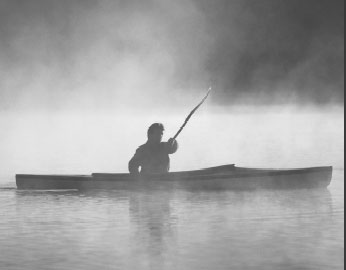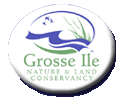

Vol. 19 No. 1
Spring is a natural resurrection, an experience in immortality -Henry David Thoreau
In this issue...
Reflections from the President
Celebration for the Gibraltar Bay Unit of the Detroit River International Refuge
2010 GI Conservationist of the Year Award
Second Sundays at the Wildlife Refuge/Nature Area
Michigan Amphibians and Mudpuppies Survey
Small Machines - Big Polluters
Upcoming Events...
May 1
Earth Day
1PM to 4PM
Centennial Farm
Contact Liz Hugel
734-552-8950
May 13
Habitat for Learning Workday
8AM to 4PM
Parke Lane Elementary
Contact Courtney Solenberger-McNeill
734-692-5007
Nature Area Open
Every Sunday
1-4PM, May 8 to Oct. 30
May 15
Interpretive Nature Walk
1PM to 4PM
Nature Area
Contact Courtney Solenberger-McNeill
734-692-5007
November 5
Annual Meeting
10AM to 11:30AM
Centennial Farm
Gibraltar Bay Fish Survey
Results provided by Dr. John Hartig, US FWS
Last Fall FWS fisheries biologist Jim Boase conducted a fish survey in Gibraltar Bay, using electrofishing—a common technique used by fisheries scientists to determine abundance, density, and species composition. An electrical current is applied to the water to stun the fish, after which they are captured, identified, counted and released. When used properly there is no harm to fish; they return to their natural state after a few minutes. Highlights of Jim’s night of electrofishing included these notes:
- 34 species of fish were captured
- Most of the fish captured were less than one year old, indicating that the fish were using the bay as a nursery area
- Fish species identified included: large and small mouth bass, walleye, yellow perch, 6 species of sunfish (including orange spotted sunfish and the longear sunfish, which is not tolerant of pollution), 6 species of sucker (including the spotted sucker, a State of Michigan Species of Concern), and important forage fish including 10 species of minnows.
Presidents’ reflections on the fish survey
The diversity of the fish and the presence of fish species like the longear sunfish and spotted sucker are indicators of a vastly improved ecosystem in Gibraltar Bay. It’s a long way from the day when young Jim Swan caught his first fish, a pumpkinseed sunfish, over in Frenchman’s Creek, not far from where the creek empties into Gibraltar Bay.
Jim, an author, actor, and outdoorsman, wrote in a June, 2007 ESPNOutdoors.com article, “We cooked it with great celebration. My first bite of that fish was memorable; I spit it out because it tasted like oil. That was my first introduction to water pollution.” With most of the Detroit River declared unsafe for water contact sports in the 1960’s, including boating, Jim grew up to earn a PhD at the University of Michigan from the School of Natural Resources and Psychology (joint program) and sought to “Make A Difference.” As one of the producers of the first Earth Day teach-ins across the country in 1970, he appeared at 22 locations and went on to accomplish more than we can give justice to here. Grosse Ile’s own Jim Swan helped create the environmental movement, which awakened America, led to the creation of the EPA, the Clean Air Act, Clean Water Act, and a slew of environmental regulations, without which we would likely not have seen such an amazing improvement in water quality and in our quality of life here on Grosse Ile. With much more work to be done, and with funding still available from federal and state agencies for further restoration, Jim just might want to come home to produce a documentary highlighting the river’s miraculous recovery.
